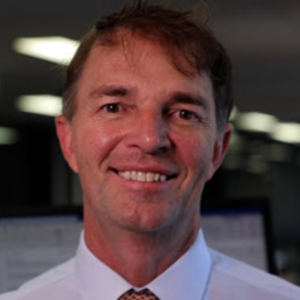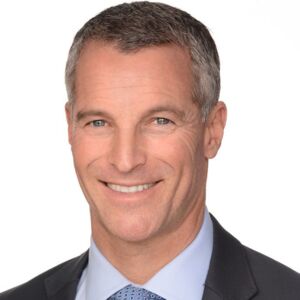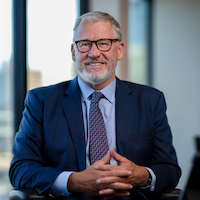Reinventing the C-suite
By Elizabeth Fry

The Morrison government's superannuation reforms call for chief executives who can deal with complexity and a much higher level of regulatory scrutiny.
This is the message from LGIAsuper and Energy Super chief executive officer Kate Farrar who says chief executives are forced to confront a rapidly changing and intensely complex environment.
"Given the pressure on funds to reduce costs, and to do that by merging, the organisations of the future will be leaner, more complicated, and more geographically distributed," she says.
"Further, as funds merge, you get differentiated cohorts within a single member base. So I think the chief executive of the future must be able to deal with a greater degree of complexity both within their organisation, and in the member base and marketplace."
In her view, running a super fund in this new and tougher reality requires new skills.
First and foremost, the chief executive and investment head must be able to execute at pace.
"That means pulling a team together, managing it well, and ensuring that people develop properly and have the necessary tools and skills to contribute," she adds.
"With this increased complexity, there is no way that one single person can find the answer to all the cross-functional questions that arise through the many regulatory interventions."
That goes for the investment chief as well.
They must ensure that all investible products meet not just CPI plus objectives - their legislative obligation to members - and remain competitive against peer products. But they also need to meet the controversial new performance test for MySuper products under the federal government's Your Future, Your Super reforms.
The industry has slammed the test for being overly burdensome and poorly drafted. Super funds warn that optimising their portfolios to ensure they pass the performance test hinders their ability maximise member outcomes.
Funds say they have less flexibility, however, LGIAsuper and Energy Super have been less critical of the legislative framework, stating their support for the intention of the legislation.
Different thinking
Farrar says the performance test is fundamentally shifting the way we think about investment. "The super industry has predominantly been focused on achieving CPI plus outcomes and was allowed long periods of underperformance with the expectation that we could outperform over time".
She thinks super funds will start to look a lot more like fund managers.
"Risk skills have become far more important, as you need to understand how you are positioned relative to the benchmarks, what kind of position size you can tolerate, and what is acceptable given that you have a critical business risk that arises through the test."
Farrar concedes that the performance test was designed and implemented quickly. But while certain aspects of the test will be tweaked, she does not expect a change in the fundamental architecture.
Unlike some of her peers, she thinks a greater risk focus, peer awareness, and defined accountabilities will be good for the sector.
What has become clear is the need to structure investment teams differently. Farrar says the performance test is won and lost at the asset class level. "So you need to think of the investment team as a series of individual specialists who have to pass the performance test".
The investment team will have very specific accountabilities. The role of the investment chief will be to check that those accountabilities are not diffused or that people are not working at cross purposes.
"That's different from how most super funds have worked. Typically, portfolio managers have had less specific accountabilities," she argues.
She has made a start. The super fund confirmed on Thursday that it is re-examining its investment approach and revamping its team structure following the mergers. Investment chief Troy Rieck will leave LGIAsuper at the end of the year.
Aside from having specific tasks, Farrar believes that economic positions will increasingly be taken at the SAA (strategic asset allocation) level, which will also be where peer differentiation occurs.
And she goes on to say, "Boards will need to be more involved in the strategic tilts that allow funds to express their economic views on opportunities without introducing critical risk through the performance test mechanism."
The focus on regulation will also demand investments into new kinds of talent.
Hiring more quants
Farrar argues that understanding every risk relative to the benchmark requires more quant skills. "We are bolstering our data and analytic skills, performance and attribution reporting, and investment risk reporting."
A further change was for the investment risk team to sit underneath the chief risk officer, reflecting the importance of having a separate organisational view on what constitutes an acceptable level of risk.
"I want to ensure the investment team is absolutely focused on generating returns, and that we have accountability by sector, across products, and across the SAA."
The level and attribution of return performance will then be measured and reported by the investment operations team.
Having spent 17 years in the energy sector, Farrar is no stranger to industry disruption. During that time she saw constantly changing regulations, massive technological disruption, amalgamation, and greater demands from consumers.
Dealing with regulators was an important part of the strategy to build LGIAsuper, which has recently merged with the $8 billion Energy Super and will purchase Suncorp Portfolio Services next April.
The latter will be funded from accumulated LGIAsuper member reserves.
Farrar took a unique approach to consolidating the three super funds to create a $30 billion entity. Once acquired, the Suncorp trustee will be mutualised, allowing those reserves to be returned to members. Following that, a successor fund transfer will be made LGIAsuper. As though that wasn't hard enough, Farrar worked on the two mergers deals simultaneously, adding complexity to an already complicated member's best interests assessment.
It was a unique transaction, the first time a profit-for-members fund has acquired a retail fund.
"It definitely added complexity," she says. "There is no question about that, but from a trustee's duty perspective, the structure made sense".
"We have plenty of time to manage the complexity with members," she explains. "People can get their heads around things that are a little bit different if you explain to them why you are doing it and what the benefits to members are."
The super fund chief executive predicts that the sector will see more unusual transactions taking place given APRA's grave concerns about the number of smaller funds, many of which are retail funds.



